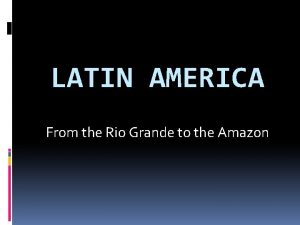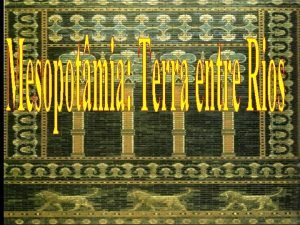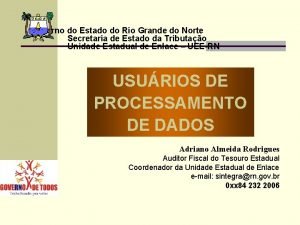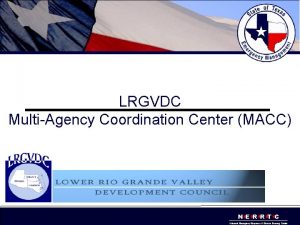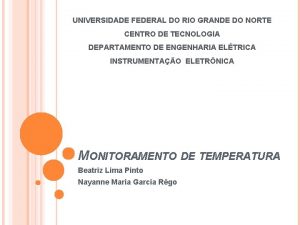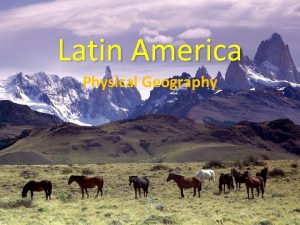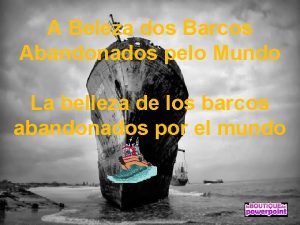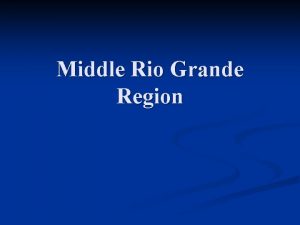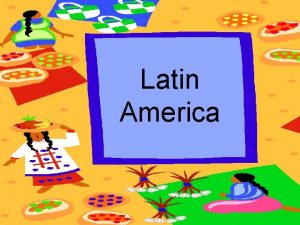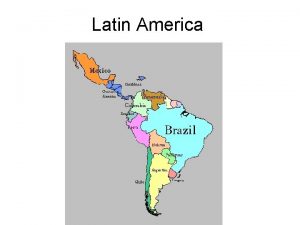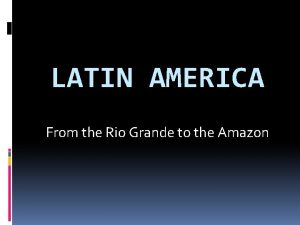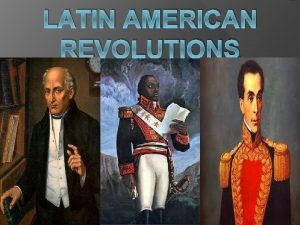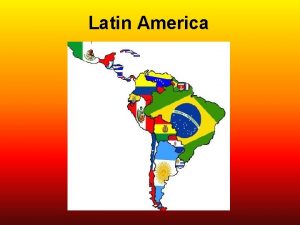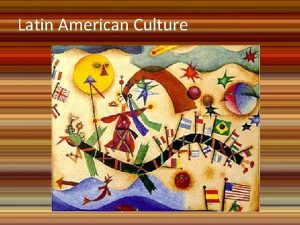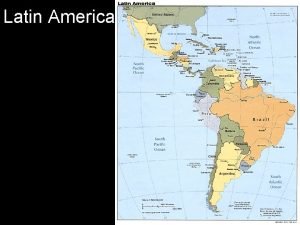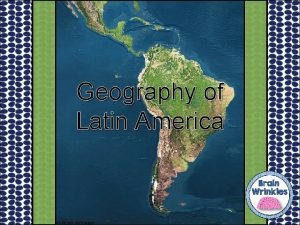LATIN AMERICA From the Rio Grande to the


















- Slides: 18

LATIN AMERICA From the Rio Grande to the Amazon

Physical Features • Dominated by mountains along the west coast • Amazon River – world’s second longest river • Lake Titicaca – highest lake in the world that can be used for boat travel • Atacama Desert – one of the driest places on earth • Angel Falls – world’s highest waterfalls

Andes Mountains in Peru

Atacama Desert

Climate Zones

Population Density • Largest Cities: • Mexico City, Mexico • Buenos Aires, Argentina • Sao Paulo, Brazil • Rio de Janeiro, Brazil

Economic Activity

Countries of Latin America • 33 countries • Brazil: largest in area and population • Major Languages: Spanish and Portuguese • Called Latin America because their languages are based on Latin – language spoken by the Roman Empire

E

Culture • Latin America is a multicultural society – influenced by European, African, and Indian cultures. • It is estimated that between 25 and 100 million natives inhabited Latin America before the explorers arrived. • The Aztecs in central Mexico, the Incas in western South America, and the Mayas in southern Mexico and Central America developed advanced civilizations and great empires.

Culture • Europeans came during the early 1500’s and used superior weapons to conquer the natives, forcing them to work in mines as slaves. • European disease also decimated much of the native population. • Europeans did bring their language and religion which has had a lasting effect on Latin America’s culture.

Culture • The Spanish and Portuguese brought Africans to Latin America when there were no longer enough natives to work in the mines and on plantations. • Over five million slaves were shipped from West Africa to the coastal areas of Brazil, Venezuela, Colombia, and the Caribbean Islands. • Their influences is seen today in the music, dance, food, language, and religion of the region.

• 90 % claim to be Roman Catholic • Latin America is home to nearly half of the world’s Roman Catholics. • Some Latin Americans still follow traditional tribal beliefs known as indigenous religions. • Other religious influences have been brought to the region by immigrants from Africa and Asia. Religion

Machismo & Marianismo • Machismo – expected of men and displayed through proving virility, showing respect, behaving honorably, acting with dignity, and being generous • Marianismo – expected of women, many believe that means being subservient (this is usually seen in public), but it is also seen in the honor and respect shown to mothers, sometimes = dominant role in the home

Work and Leisure • Many Latin Americans believe that work is something that must be done in order to have leisure. • Leisure is valued as a time to appreciate family, friends, and the finer things in life. • This attitude also translates into the Latin American concept of time – no need to be pressured by the clock!

Political Culture • The struggle for power between the small groups of wealthy elite and large majority of lower classes has created a state of turmoil and confusion for much of Latin America’s history. • While there have been moments of democratic government, much of Latin America has leaned toward authoritarianism. • However, in the 1980’s democracy swept the region and by the early 1990’s every state except for Cuba was run by a democratically-elected government.

Sao Paulo, Brazil

Slums in Latin America
 Why is it called latin america
Why is it called latin america Located
Located Sociedade mesopotamica
Sociedade mesopotamica Student portal rio
Student portal rio Ponte rio grande são josé do norte
Ponte rio grande são josé do norte Sintegra rn
Sintegra rn Major us rivers
Major us rivers What river separates texas from mexico
What river separates texas from mexico Rio grande river
Rio grande river Rio grande turkey vs merriam
Rio grande turkey vs merriam Macc uece
Macc uece Rio grande river
Rio grande river Costa branca
Costa branca Rio grande river
Rio grande river Universidade federal do rio grande do norte
Universidade federal do rio grande do norte Bacia hidrográfica do rio grande
Bacia hidrográfica do rio grande Physical geography of latin america
Physical geography of latin america Arenização rio grande do sul
Arenização rio grande do sul Navios abandonados pelo mundo
Navios abandonados pelo mundo

